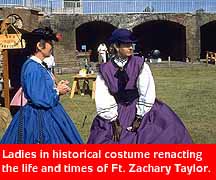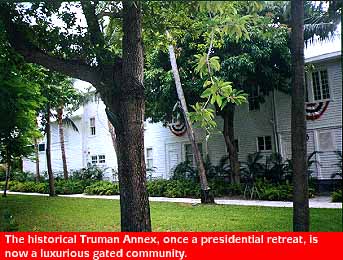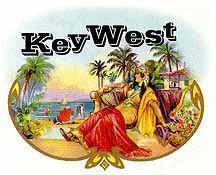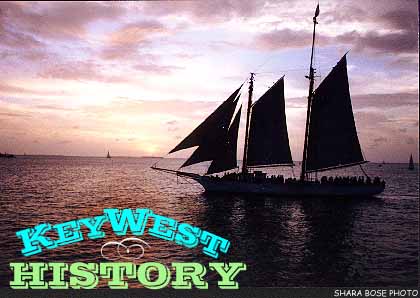Key
West Lodging
Stuff
to Do
Key West Hide Outs
Beaches
& Fishing
Attractions
Historical
Museums
Galleries
Sailing
& Cruises
Dining
Shopping
|
HISTORY
 nhabited
by the fierce Calusa Indians, the Florida Keys was first sighted and chronicled
for the western world by Antonio de Herrera on May 15, 1513, who was searching
at the time for the Fountain of Youth with fellow explorer Ponce de Leon. nhabited
by the fierce Calusa Indians, the Florida Keys was first sighted and chronicled
for the western world by Antonio de Herrera on May 15, 1513, who was searching
at the time for the Fountain of Youth with fellow explorer Ponce de Leon.

For more information, get this book from Amazon.com
|
This area became the bastion of fishermen, but also of treasure-stashing
pirates, who were eventually chased away by the U.S. Navy, having established
their pirate fleet in Key West in 1822.
The U.S. took possession of Florida in
the early 1800's, and settlers soon filtered in to this southernmost
city from the mainland and from the Bahamas. Key West soon became the
wealthiest city in the Republic from a thriving shark factory, pineapple
plantations and wrecking businesses, which salvaged goods from ships
that sunk around the trecherous coral reefs nearby .
 In 1845, construction began on Fort Zachary Taylor, shortly after Florida
became a state. Yellow fever, shortages of material and men, remoteness,
hurricanes and the Civil War in 1861 all conspired to delay completion
of the fort for 21 years. Key West remained in Union hands as an important
outpost since many blockade-running ships were detained at Key West
harbor and guarded by FortTaylor's impressive 10-inch Rodman and Columbiad
cannons, which had a range of three miles. In the years that followed,
Fort Taylor was again used during the Spanish-American War.
In 1845, construction began on Fort Zachary Taylor, shortly after Florida
became a state. Yellow fever, shortages of material and men, remoteness,
hurricanes and the Civil War in 1861 all conspired to delay completion
of the fort for 21 years. Key West remained in Union hands as an important
outpost since many blockade-running ships were detained at Key West
harbor and guarded by FortTaylor's impressive 10-inch Rodman and Columbiad
cannons, which had a range of three miles. In the years that followed,
Fort Taylor was again used during the Spanish-American War.
By the 1870's, sponge fishing and cigar
making became very profitable industries, and . In 1900, Key West was
the site of the first overseas telephone call to Havana, Cuba, 90 miles
away. In 1912, Henry Flagler's railroad brought wealthy vacationers
who brought with them an era of gentility.
 The Depression brought the boom-time to an abupt end, and a hurricane
in 1935 likewise destroyed the railroad 100 miles to the north. But with
federal aid in 1938, the Overseas Highway was built with the hopes of
recreating Key West as a tourist destination. World War II dashed those
plans once again, until a submarine base was built for the war effort.
During the administration of President Harry S. Truman, the "Little
White House," in what is now called the Truman Annex, was his fall
and winter vacation home, which he continued to use after his term in
office until 1969. Later, a thriving shrimping industry became established
in Key West, which helped it reclaim it's place in the sun. Today, this
fishing outpost of yesteryear now enjoys over 3 million visitors a year.
The Depression brought the boom-time to an abupt end, and a hurricane
in 1935 likewise destroyed the railroad 100 miles to the north. But with
federal aid in 1938, the Overseas Highway was built with the hopes of
recreating Key West as a tourist destination. World War II dashed those
plans once again, until a submarine base was built for the war effort.
During the administration of President Harry S. Truman, the "Little
White House," in what is now called the Truman Annex, was his fall
and winter vacation home, which he continued to use after his term in
office until 1969. Later, a thriving shrimping industry became established
in Key West, which helped it reclaim it's place in the sun. Today, this
fishing outpost of yesteryear now enjoys over 3 million visitors a year.
|
![]()


![]()

